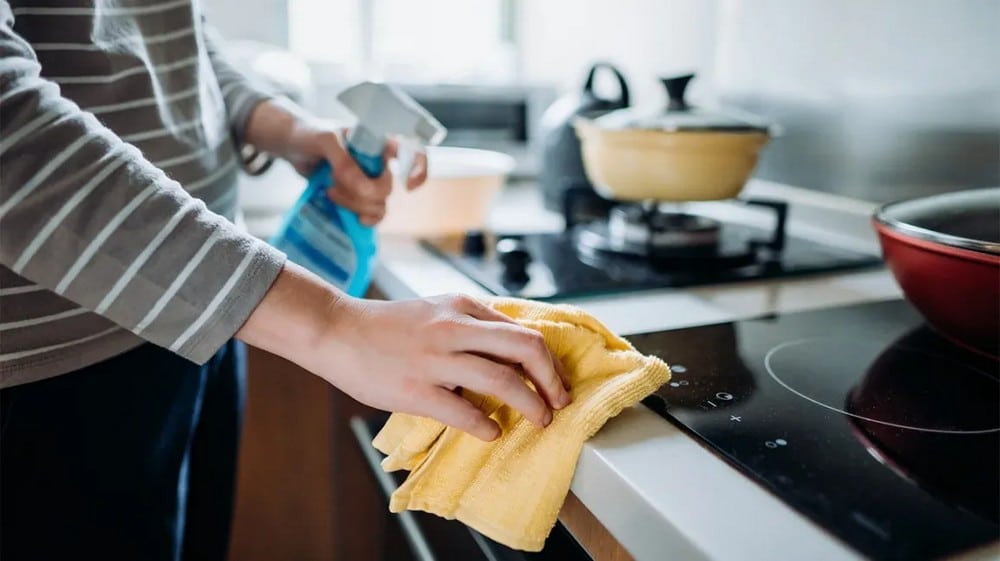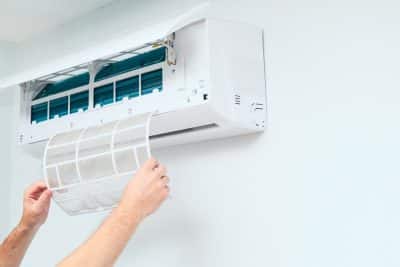
Even in clean homes where kitchens look neat, under the surface, things can quickly get out of hand and turn into a breeding ground for germs. As food preparation areas, they require a higher standard of cleanliness than other rooms in the home.
That’s why we wipe counters, wash the dishes, and mop the floors, but some of the filthiest surfaces can escape our attention and hide microorganisms in plain sight. And the scary part? They can quickly turn into a safe haven for harmful bacteria like Salmonella, E. coli, and even stubborn mold spores that will quickly start spreading around.
As a water source in the house and high-traffic zones that see heavy daily use, kitchens are vulnerable to germs. Combine moisture, heat, and food particles, and you get a perfect cocktail for bacterial growth. In today’s article, we pick the brains of one of the leading professional Chesterfield cleaning services to outline 7 areas of concern and shed light on this residential concern.
What is the dirtiest place in a kitchen?
While most of us will place the blame on the raw chicken on the counter, the real culprit may be the sponge we use to wipe it off, the handles we touch afterward, and the gadgets we rarely clean. Ready for a reality check? Here are the 7 dirtiest areas of the kitchen that are screaming for a proper scrub.
1. The kitchen sponge
Hands down, the dirtiest thing in most kitchens is the sponge. Yes, we use it to wipe everything, from dirty dishes to food spills, but a lot of the time, we’re just spreading bacteria from one surface to the next. Studies have found millions of microorganisms living in a single damp sponge, including E. coli and Staphylococcus.
Quick fix: Microwave the damp sponge for 2 minutes after heavy use, and remember to replace it weekly.
2. Sink drain & disposal unit
If you stop to think about it, this one may not be so surprising as the previous example. All our rinsed-off food scraps, raw meat juices, and filthy dishwasher end up deep in the sink drain. A wet, dark drain is a true germ hotel. And the disposal? Even worse! It’s good that it’s kept out of sight since it’s usually coated with slimy buildup and old food particles.
Quick fix: Pour a mixture of baking soda and vinegar down the drain and follow it with boiling water.
3. Fridge handles
We open the fridge first thing in the morning. We reach for refreshments in the fridge as soon as we step into the house. We open it several times mid-cooking with our hands covered in grease or sticky sauces. We reach for those handles more times than we realize, but we rarely wipe them down.
Quick fix: Wipe the refrigerator handles with a disinfectant every day, especially during the flu season and in very hot weather.
4. Cutting boards
Wood or plastic, cutting boards are bacteria magnets. They are not helped by the fact that we usually use them to cut microb-rich foods like meats, cheeses, and seafood. Another complicating factor is deep grooves from knives that create a perfect hiding spot for contaminants.
Quick fix: Sanitize them after each use with hot, soapy water or a bleach-water solution (1 tbsp bleach to 1 gallon of water).
5. The blender gasket
If your blender comes apart, chances are you’re usually washing the jar and lid but not the gasket. The blender gasket (the rubber thing at the base) traps food bits and moisture with each use. Since it’s rarely cleaned properly, over time it becomes a moldy mess, ridden with bacteria and who knows what else.
Quick fix: Always disassemble the unit and clean each part after use. Put it in the dishwasher or soak it in warm, soapy water to ensure a deep clean.
6. Salt & pepper shakers
Let’s be honest, when was the last time you cleaned your salt and pepper shakers? You may not be surprised to hear that the answer is usually – never! Whether you’re seasoning meat or using it during food prep, your fingers transfer germs directly onto the shakers, and then someone else picks them up.
Quick fix: Wipe the shakers with antibacterial wipes once a week or more often when you use them during food preparation.
7. Knobs, pulls, switches & buttons
From door and stove knobs and cabinet pulls to light switches and microwave buttons, the cooking area is replete with surfaces that are often touched but not not wiped often enough. Usually made of plastic, they quickly turn into germ hotspots that are easily accessible to every member of your household.
Quick fix: Instruct your reliable cleaning service to add them to their regular cleaning routine. They don’t require too much attention. A quick once-over with a disinfectant goes a long way in preventing illness.
We get it – life is busy, and little things can easily slip our minds. But some of these tiny troublemakers can affect your family’s health and cause serious harm if left unchecked. There is no reason to go overboard and try to turn the kitchen into a sterile lab. A few smart moves here and there from your chosen maid service are all it takes to save you from an occasional stomach bug, a flu-ridden week in bed, or even worse.








